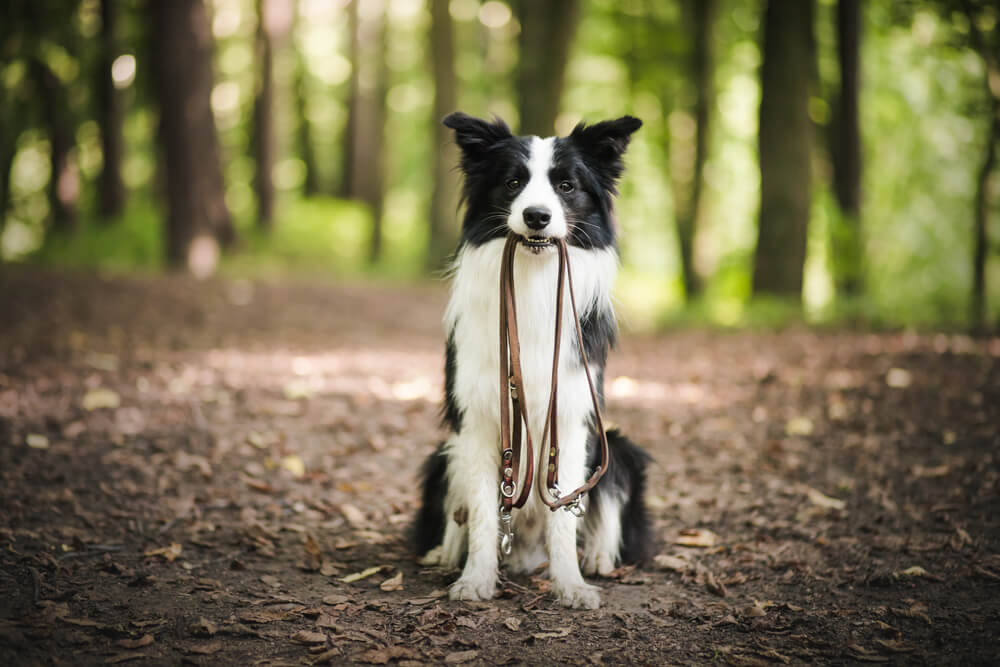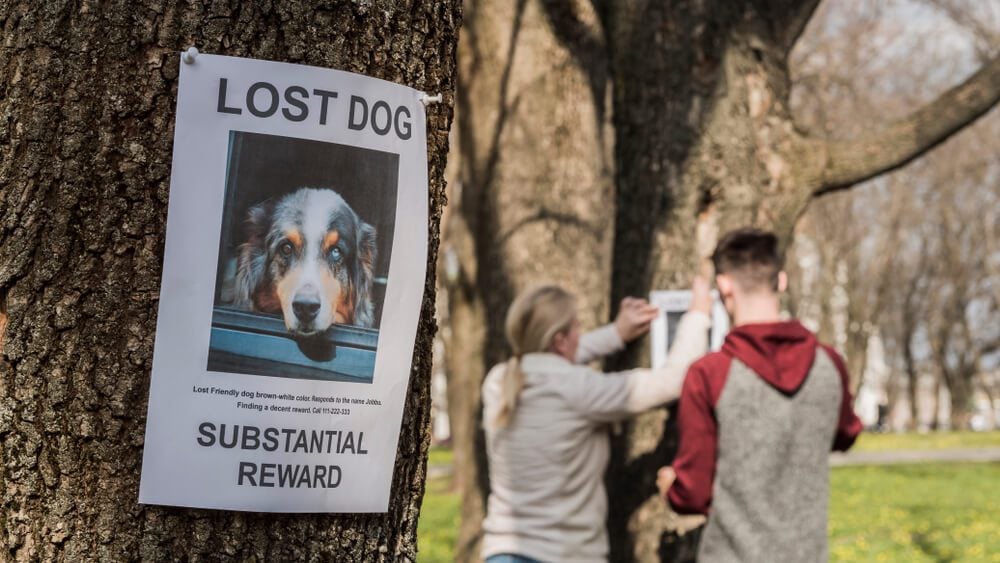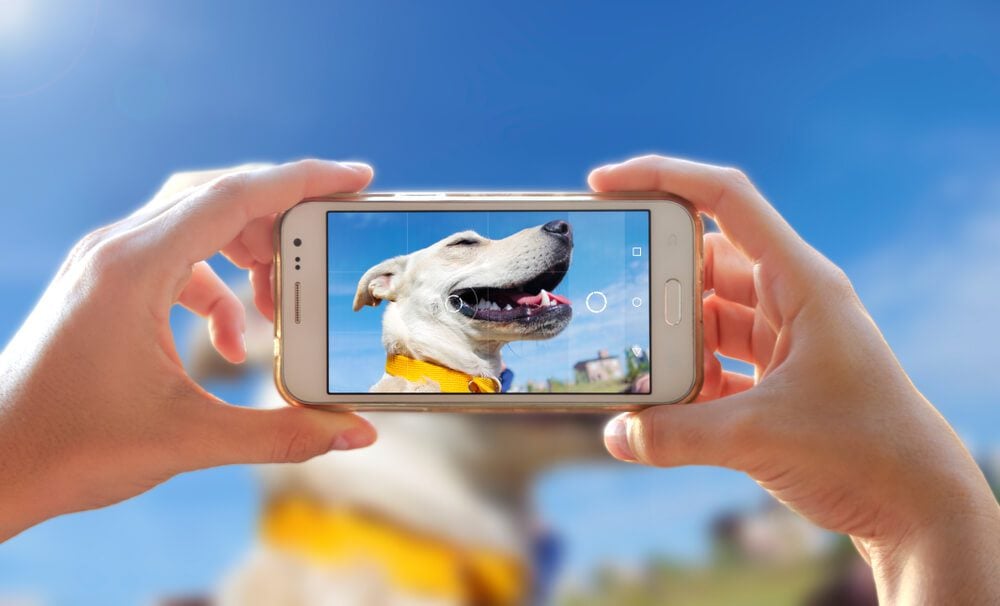How To Find A Lost Dog: Tips To Bring Your Missing Dog Home Fast

Table of Contents
What are the Chances of Finding a Lost Dog?
The chances of finding your lost dog depend on how quickly you begin a search and whether your dog has an id tag or microchip. The American Society for the Prevention of Cruelty to Animals (ASPCA) conducted a study in 2012 and reported that 15% of pet owners had their pet go missing, and 85% had found their missing pet. The chances of finding your pet are high if you take action as soon as possible.

How to Find a Lost Dog
Below you will find ten steps to locate your missing pet.
1. Check at Home First
If your dog has gone missing, take a deep breath and check if you can find your lost pet at home. If loud noises, unfamiliar company, or other anxiety triggers have frightened your dog, they may be hiding in a secure place.
Search for your missing dog in the following locations:
- closets
- garages and cars
- under beds
- garden and sheds
- basements and attics
- behind couches
- pool
- next-door neighbor
Calling your dog’s name while shaking their treat jar or carrying their favorite dog toy might encourage them to resurface.
2. Call and Verify Your Lost Dog’s Microchip Contact Information
If you’ve microchipped your dog, make sure the microchip information is updated by calling the microchip company. You can also log in online to verify that you’ve linked the correct contact details to the chip.
What if you don’t know the name of the company or the serial number on the chip? You can contact your vet, who may have it on their records. A universal pet microchip lookup tool can assist you by identifying the company that produced the serial number.
How to Find a Lost Dog with a Microchip?
A microchip does not operate as a GPS, and the device will not locate your pet. Instead, it provides contact information once your pet is found and scanned.
If someone has found your missing dog and taken them to a shelter, animal hospital, or veterinarian’s office, the center will scan your dog and find the unique serial number on their chip. They will then contact you to arrange a reunion.
3. Determine Your Search Radius
Determine the search radius for your pet by considering the following points:
- If your dog escapes from home, do they run in the same direction?
- Is a familiar family, pet, or location in the area where your pet might find solace, food, or company?
- Did your dog go missing close to home, or are they lost in an unfamiliar area?
- Are there any dangers that could put your dog in harm’s way, i.e. a highway, a pending storm, or a large body of water?
- How active is your dog?
- Were they following a scent and exploring, or triggered by fear and possibly hiding?
These clues could narrow down your search mile radius and assist in tracking your lost animal.
4. Search the Area Where the Dog was Last Seen
If your dog has run out of sight, search the area where you last saw them. You may attract your dog if you try the following actions:
- Call their name
- Stop to show passersby and neighbors a picture of your dog and share your phone number with them
- Follow your pet. If your dog ran into a bush to chase a scent, search that spot where they might still be sniffing around.
- Ask a friend to wait at your house or leave a family member there in the event that your dog returns.
- Reach out for assistance from locals, neighbors, and your neighborhood watch group.
5. Report Your Dog Missing and Contact Local Shelters
Report your dog missing to your local animal shelter and provide a photo of your dog. Rescue groups, animal control agencies, pet humane society, and caring community members are key in the efforts to return lost pets to their families.
Shelter Animals Count 2020 statistics reported that among animal shelter rescue dogs in the U.S., 40.7% of dogs are returned to their owners.
6. Use Facebook and Other Social Media Networks
Reach out to your local community Facebook groups and social media networks to assist in locating your lost dog. Often people post photos of a found dog on a lost and found pets group, alerting pet parents to a discovered pet.
Include the following information in your post to avoid too many questions:
- a clear photo of your dog that shows their markings
- your dog’s name or nickname
- the general temperament of your pet – are they timid, friendly, aggressive, or anxious?
- the time and place where you last saw your pet
- your contact information
- whether your dog has a collar or microchip
Once you’ve found your dog, make sure to update your social media post, thanking the neighborhood for their support and concern.
7. Use Craigslist and Neighborhood Apps
Neighborhood apps provide a quick place to alert your community that your dog is missing. Security apps, Nextdoor, or Craigslist, are frequently viewed by thousands in your community, therefore providing a platform that can broadcast your need for help.
8. Make and Distribute Lost Dog Posters
You can make and distribute lost dog posters to pin on telephone poles or bulletin boards in the following place:
- local grocery stores
- community centers
- pet supply stores
- schools
- local shelters
- local coffee shops
- animal hospitals
Fliers should be detailed but concise, including information like your dog’s name, description and breed type, clear photo, collar information, last seen location and date, and your contact details. You could also encourage support by offering a reward.
Online templates make it easy to get a flier made within minutes.
Do ‘Lost Dog’ Posters Really Help People Find Their Pets?
Yes, lost dog posters can help you get your dog back. The best approach is an all-around strategy where you rely on digital, print, and word-of-mouth to get your lost pet home.
9. Consider Other Options to Find a Lost Dog
A master pet detective will consider all the options to find a lost dog. Make use of the following options:
- PawBoost is a website and app that puts out a free alert for missing pets to their local Facebook page and alerts a Rescue Squad that’s made up of volunteers, rescue owners, shelter employees, veterinarians, and pet parents.
- Petco Love Lost is a central online hub that seeks lost and found dogs in shelters and animal rescue groups nationwide in the U.S.
10. Don’t Give Up!
Don’t give up hope when you’ve done all that you can to retrieve your pet. It could take a few hours, or even days, but many pet owners are reunited with their lost pets.
Patience and consistent communication with your local community, animal hospitals, and shelters are the best hope of being able to sit on your porch with your dog again.
How to Find a Lost Dog with a GPS Dog Tracker
A GPS pet tracker provides the easiest and quickest way to find your lost pet. Most GPS pet trackers are small devices attached to the dog collar and give a real-time location of where your dog has wandered off.
Once your dog goes missing, open the GPS app on your smartphone and access the live coordinates of your pet’s GPS collar. Some apps allow you to share the location with your neighbors, friends and anyone else who is helping to track your pet.
Some trackers have a geofencing feature that will notify you if your dog exits a safe, pre-determined area. So if you’re at work and your dog chases a mail carrier, your app will notify you to take quick action.
Beware of Dog Theft Scams
It’s vital to be mindful of dog scams to avoid handing a found dog over to the wrong people. If you’ve found a lost pet, take the pet to a local shelter and share minimal information online. For example, share a photo, but not the pet’s name that you might find on their collar. Or confirm with the acting pet parents a certain detail of the pet’s appearance.
Only hand a found dog over to trustworthy locations like shelters or the local veterinarian’s office.
As the pet owner who has lost their dog, another step you can take to finding your pet is searching “for sale” dog posts. You might find your dog in the unfortunate hands of pet thieves and can take action to rescue your pet.
How to Ensure That Your Dog is Never Lost Again
Avoid losing your pet again by taking the following precautions:
- Give your pet an id tag with clear contact details.
- Get your dog or cat microchipped.
- Have your pet spayed or neutered, as this diminishes their natural tendency to wander.
- Ensure that you replace batteries in your dog’s tracker as needed.
- Secure your property, covering up any holes where your pet might escape.
- Take actions to medicate and calm your pet during storms or holidays when neighbors might use fireworks that scare them off.
- Exercise your pet and fuel their curiosity, so they don’t roam off to find it elsewhere.
- Take photos of your pet often so that you always have a snapshot on hand should they disappear again.
Frequently Asked Questions
What are the Chances of Finding Your Lost Dog?
The American Society for the Prevention of Cruelty to Animals (ASPCA) reported that 85% of pet owners find their missing pets.
Where Do Dogs Hide When Lost?
Lost and fearful dogs may hide in closets, garages, cars, tight spaces in the home, or even at your next-door neighbor. Look for your pet at home before you broaden your search to the neighborhood.
How Do You Attract a Lost Dog?
Once you’ve spotted your pet, lure your dog with their favorite treat, a strongly scented meal, or by calling their name. Do not chase your dog; rather, approach them calmly or sit on the ground until they come to you.
Can Dogs Find Their Way Back Home if They Get Lost?
Yes, many times, dogs are able to find their way back home with their keen sense of smell and detection of magnetic fields, according to a collaborative study from the Czech Republic.
What are the Best Ways to Find a Lost Dog?
The best way to find your lost dog is to use an all-around approach, using digital, print, and word-of-mouth to get your missing pet back home.



















